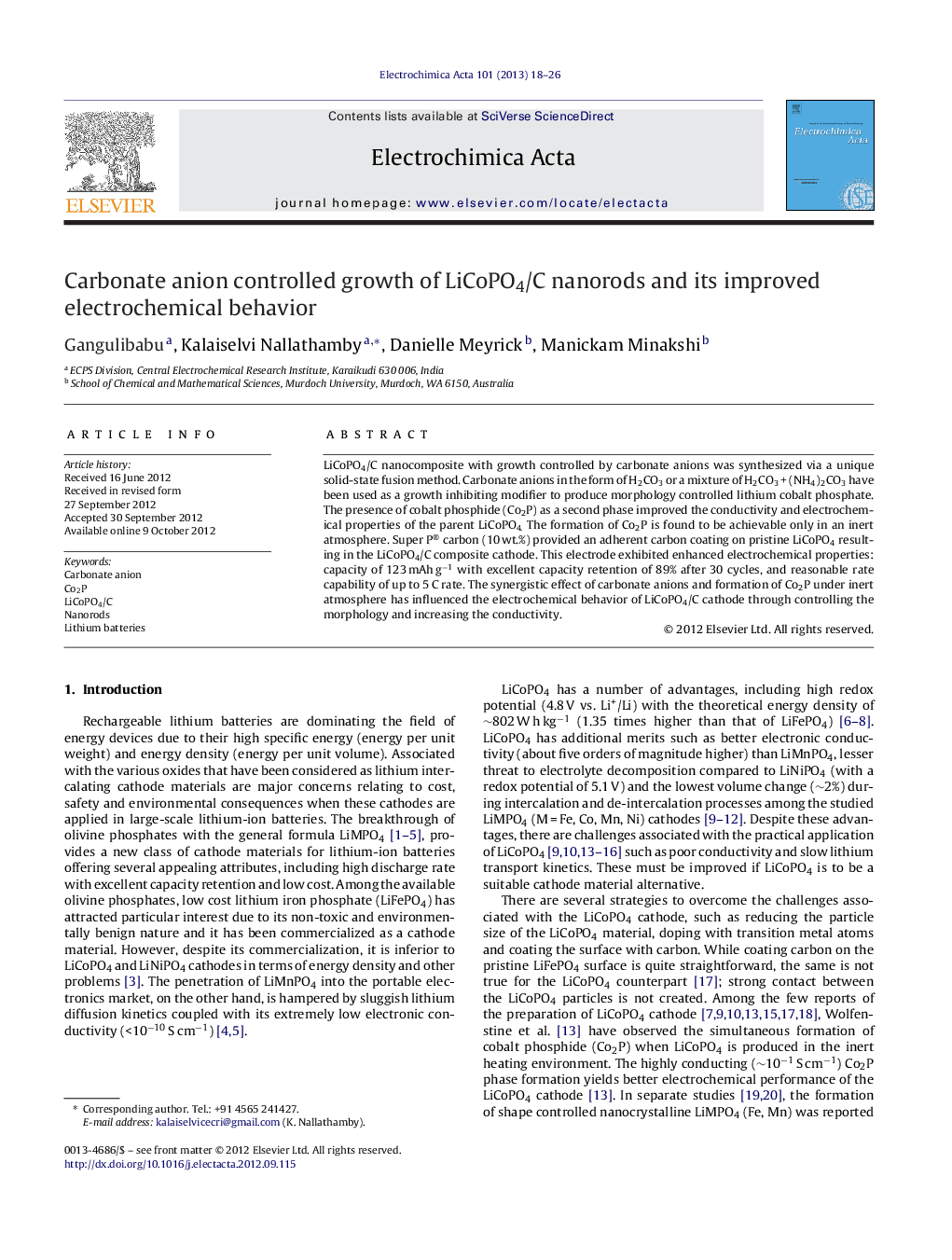| Article ID | Journal | Published Year | Pages | File Type |
|---|---|---|---|---|
| 187161 | Electrochimica Acta | 2013 | 9 Pages |
LiCoPO4/C nanocomposite with growth controlled by carbonate anions was synthesized via a unique solid-state fusion method. Carbonate anions in the form of H2CO3 or a mixture of H2CO3 + (NH4)2CO3 have been used as a growth inhibiting modifier to produce morphology controlled lithium cobalt phosphate. The presence of cobalt phosphide (Co2P) as a second phase improved the conductivity and electrochemical properties of the parent LiCoPO4. The formation of Co2P is found to be achievable only in an inert atmosphere. Super P® carbon (10 wt.%) provided an adherent carbon coating on pristine LiCoPO4 resulting in the LiCoPO4/C composite cathode. This electrode exhibited enhanced electrochemical properties: capacity of 123 mAh g−1 with excellent capacity retention of 89% after 30 cycles, and reasonable rate capability of up to 5 C rate. The synergistic effect of carbonate anions and formation of Co2P under inert atmosphere has influenced the electrochemical behavior of LiCoPO4/C cathode through controlling the morphology and increasing the conductivity.
► Carbonate anion controlled growth of LiCoPO4 nanorods has been prepared. ► Mixture of H2CO3 + (NH4)2CO3 increases the CO32− concentration and acts as an effective growth inhibitor. ► Heating the carbonate rich precursor in an inert atmosphere produces a Co2P phase that is conductive. ► Addition of super P carbon resulted in an amorphous carbon coating on LiCoPO4 particles. ► LiCoPO4/C nanorods with a co-existence of Co2P exhibit excellent discharge capacity with retention on multiple cycling.
